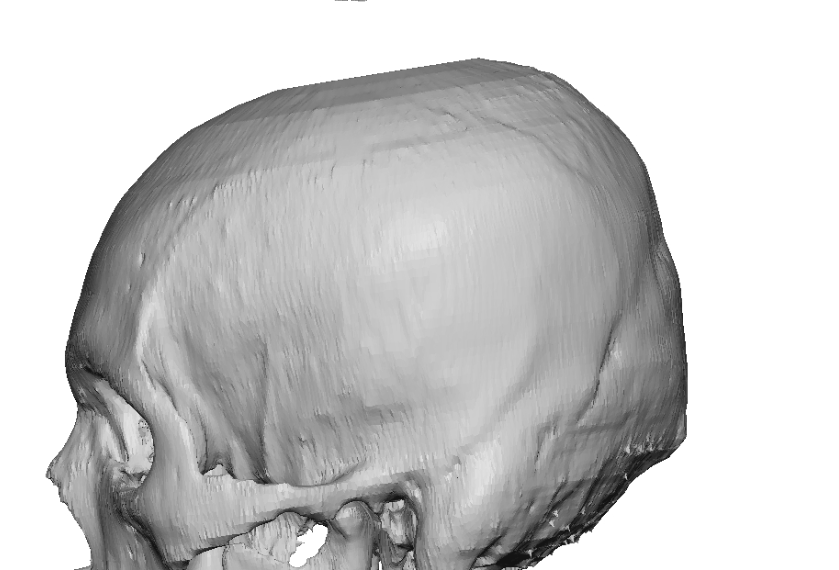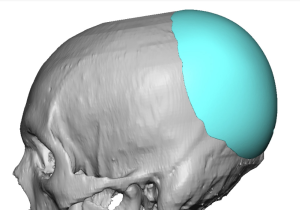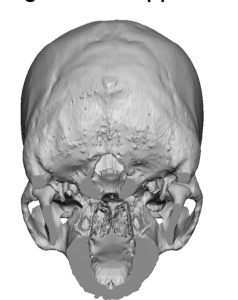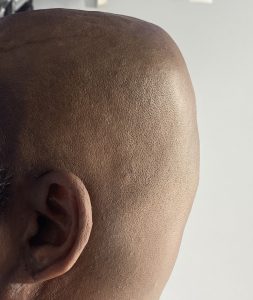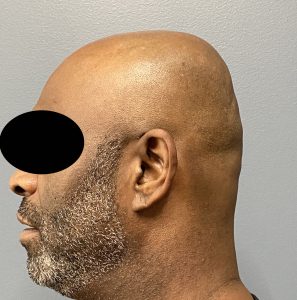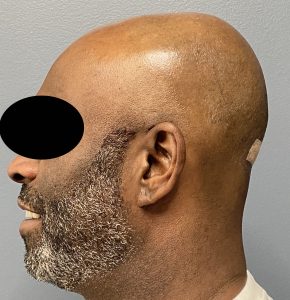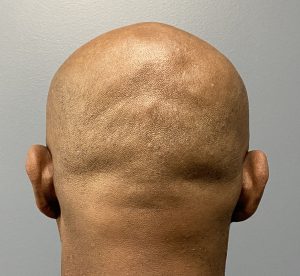Background: The flat back of the head is one of the most common aesthetic skull deformities seen. Although there is no biologic reason that it would occur more in men than women, most flat back of the head patients I see for treatment are men. The reason of course that more men present for treatment is their exposed head with short hair or a completely shaved head.
Many shaved head men that present for back of the skull augmentation have a ‘hat story’ to tell. This means they regularly wear hats/caps and have done so for a long time to camouflage their head shape concerns. They have many hats and have to regularly think about the hat and the clothes that they will wear with it so they match. To the outsider it may seem that they are wearing hats as a style issue…when the reality is they would prefer not to and want to be free of this hat wearing.
Some patients for back of head augmentation inquire about the use of bone cements thinking they are more natural. Besides the fact that PMMA is just a plastic material and HA is synthetic calcium phosphate, there is one major factor that patients overlook and is never mentioned. To get an effective push on the tight overlying scalp (which is used to a smaller underlying bone volume) you need an implant material that is stiff, can push back and not be deformed with the pressure of the scalp. Bone cements have to be intraoperatively applied as a putty and requires time to set. They can not resist very well a tight scalp when introduced through small incisions and thus get squished down. As a result their augmentative effects are limited, never more than 60cc in volume. This is in stark contrast to preformed solid silicone skull implants where volumes up to 150ccs are regularly placed.
The trick with large performed skull implants is how in the shaved head male, who has the most exposed implant area, to get them in through an acceptable small scalp incision.
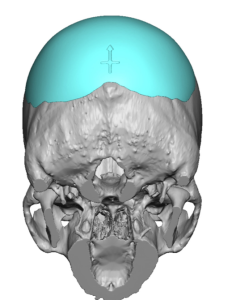
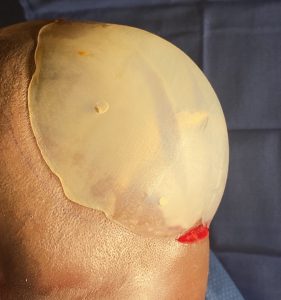
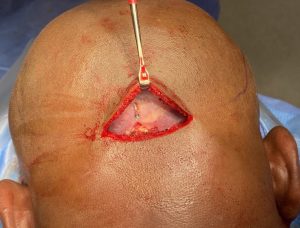
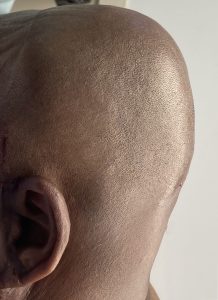

Case Highlights:
1) The flat back of the head is always best treated by a custom skull implant approach.
2) A custom implant offers a preformed shape device that maximally displaces the tight overlying scalp outward and resists any inward deformation of the implant unlike bone cements.
3) The key technical maneuver is custom back of the head implants is how to get such a large implant through a small scalp incision.
Dr. Barry Eppley
Indianapolis, Indiana

